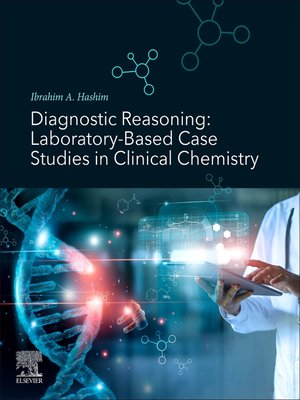Diagnostic Reasoning
ebook ∣ Laboratory-Based Case Studies in Clinical Chemistry
By Ibrahim A. Hashim

Sign up to save your library
With an OverDrive account, you can save your favorite libraries for at-a-glance information about availability. Find out more about OverDrive accounts.
Find this title in Libby, the library reading app by OverDrive.



Search for a digital library with this title
Title found at these libraries:
| Loading... |
Training in clinical chemistry is acquired via different avenues that include didactic lectures on pathophysiology of disease, methodologies and practical aspects of testing, and through attendance of operations meetings, sign-out sessions, seminars and tutorials. There is little instruction on how to apply the vast amount of knowledge gained in the process to practice. In other branches of medicine, cases are regularly presented with clinical information and therapeutic interventions which form the basis of training. Diagnostic Reasoning: Laboratory-Based Case Studies in Clinical Chemistry fills this gap for clinical chemistry. The concise and practical approach of the book, including real-life scenarios, is an excellent resource for pathology trainees, clinical laboratory science students, clinical chemistry fellows, clinical laboratory professionals, and clinicians. These cases help professionals remain competent in the field and be successful in their board exams. The cases are stated as they present, often with no or few clinical details accompanying the sample request with only barcoded samples arriving into the laboratory. In a busy laboratory, thousands of these cases are received daily and it is impossible to review the clinical information associated with the specimens. There are no books with a similar approach and emphasis Fills the gap in teaching by addressing the subject from a laboratory practical prospective with concomitant application of evidence-based laboratory investigation Presents laboratory data in tabulated format to resemble real-life scenarios, shows list of abbreviations and conversion factors Cases begin with clinical presentation and information not available to those within the clinical laboratory Discusses the differential diagnosis and suggests additional testing or investigations as necessary






